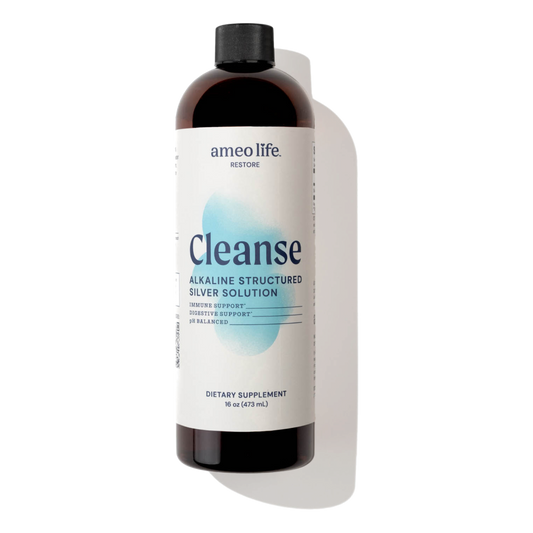How Do I Know If It's Candida or SIBO?

Let's Distinguish between Candida or Sibo
If bloating, diarrhea or constipation have brought you to this page, there are high chances that your body is suffering from Candida or Sibo. Both Candida overgrowth or (SIBO) small intestinal bacterial overgrowth. It can quickly drain you and can be quite challenging to diagnose. Thankfully there are some great tools to help get relief.
Given that both of them have similar symptoms, you might need to go the extra mile to distinguish between the two. If you find yourself stuck in this dilemma, here's a complete guide that breaks down all the critical differences you need to know to determine if it's Candida or SIBO.
So let's dive right into it!
What is Candida Overgrowth?
To find out whether you have Candida Overgrowth, we first need to review the fundamentals.
Candida is a fungus which is a form of yeast that usually resides in your mouth and intestines. It is responsible for making sure your gut health and digestion process is entirely seamless. Normal concentrations of Candida help keep your gut microbiome in a balanced state, harmonizing it.
However, when this balance of good bacteria gets out of control (spoiler alert: we will be talking about this in a while), it upsets the balance between Candida and other microorganisms to lead you to have symptoms likes brain fog, mood swings, fungal infections, fatigue, bloating along with many more.
Causes of Candida
Although Candida in a balanced state plays a significant role in keeping the digestive running smoothly, the yeast population can get out of control with too many antibiotics and a diet high in refined carbohydrates and sugar.
Besides that, high alcohol intake, birth control pills, and lifestyle choices like chronic stress and lack of physical activity can also cause yeast overgrowth.
Remember, Candida overgrowth has a destructive domino effect that only deteriorates with time. Therefore, it is recommended to take the necessary diagnostics and actions to get rid of it completely.
What is SIBO?
As a general rule of thumb, most of the body's bacteria are located in the large intestine to help break down food and eliminate waste. However, when there is an overgrowth of general bacteria in the body, it triggers your small intestine's bacterial growth.
As a result, these bacteria feed off of undigested food to produce hydrogen. This hydrogen later provides the single-celled organisms in your small bowel (archaea) to produce methane. Now you are left with excess methane and hydrogen, which can cause severe digestive problems.
A lot of information to take in? Read that again.
Causes of SIBO
A healthy gut involves breaking down food using enzymes and passing it through the digestive tract from the stomach to the small intestine going all the way to the colon. However, some of the conditions can trigger SIBO and disturb this 'healthy' digestive process.
- Damaged nerves or muscles in the gut can leave bacteria in the small intestine to accelerate the development of SIBO
- Physical obstructions like scaring from past surgeries, Crohn's disease, and diverticula can quickly build up bacteria instead of passing it to the colon
- A high intake of sugar, alcohol, refined carbohydrates, or other high carb foods can also aggregate the overgrowth of SIBO.
Candida vs. SIBO Overgrowth

Now that you are aware of the fundamentals, let's get to the answers you came here for in the first place. To state it simply, the main difference between Candida vs.
SIBO is that Candid a is a yeast overgrowth, whereas SIBO is an overgrowth of bacteria.
Candida will not only affect your digestive system but can get into your bloodstream to affect your mouth, skin, urinary tract, and the rest of the body. However, with SIBO, the bacteria typically reside in your intestines to cause abdominal pain and other digestive issues.
That said, the easy way to find out whether you have Candida or SIBO is to pay attention to the symptoms you are experiencing.
Candida vs. SIBO: Symptoms
SIBO Symptoms
- Sudden food intolerance. For example, lactose, gluten, and particularly histamine
- Abdominal pain or cramping
- Constipation
- Fat malabsorption (pale or bulky stools)
- Leaky gut
- Chronic illnesses like chronic fatigue syndrome, neuromuscular or diabetes
- Diagnosis of Irritable Bowel Syndrome (IBS) or Inflammatory Bowel Disease (IBD)
- Vitamin and mineral deficiencies
Candida Overgrowth Symptoms
- Vaginal infections, vaginal or rectal itching, and urinary tract infections
- Suffering from fatigue or fibromyalgia
- Autoimmune diseases such as Hashimoto's thyroiditis or rheumatoid arthritis
- Skin and nail fungal infections like ringworm or athlete's foot
- Lupus or multiple sclerosis
- Difficulty concentrating, ADHD, brain fog, or poor memory
- Skin issues like eczema, hives, or rashes
- Depression, mood swings, and anxiety
- Severe seasonal allergies or itchy ears
Candida vs. SIBO: Testing
Although these symptoms can help give an excellent estimate to determine whether you have Candida or SIBO, you should always take medical tests before taking any actions. Here are a few tests you can take for Candida:
- Blood test: this is the most common way to check Candida overgrowth. A high level of IgG, IgA, and IgM Candida antibodies can indicate an overgrowth of Candida present in the body. Look for optimum levels of igG of 700-1,500 mg/dl, IgA of 60-400 mg/dl, and IgM of 60-300 mg/DL. Anything above is considered to be an overgrowth of Candida antibodies.
- Complete blood count (CBC) test: the optimum white blood cell count is around 4,000 to 11,000 per microliter of blood, and anything lower than this can be associated with Candida overgrowth.
Tests for SIBO:
- Lactulose Breath Test from Aerodiagnostics: this helps to determine the hydrogen and methane content in your body.
- Comprehensive stool test: this can be taken for both Candida and SIBO to directly analyze the levels of Candida by looking at the different species of yeast and look at the flora of the large intestine to determine the bacterial overgrowth. This can also indicate multiple gut infections at the same time.

Candida vs. SIBO: How to Get Rid of It?
Treating Candida overgrowth or SIBO doesn't just involve thoroughly eliminating its production. To make this a no-brainer for you, here I have thoroughly tested and compiled a 3-step regimen to do at home to help you aid Candida and SIBO overgrowth for good.
Step 1: Starve the Overgrowth
You will need to cut down on any food that can fuel the overgrowth of yeast and bad bacteria. Here are some of the foods you must avoid:
- Carbohydrates
- Alcohol
- Sugar
- Legumes
Foods to eat:
- Plenty of non-starchy vegetables
- Leafy greens
- Low glycemic fruit
- Healthy fats
- Lean proteins
Step 2: Kill the Overgrowth
Now that you have starved the overgrowth by implementing a healthy diet, you can further assist with supplements to create an inhospitable environment for yeast overgrowth. There are several natural and safe ways to eliminate the bad guys including caprylic acid (a fatty acid found in coconut oil) and silver solutions, among others.
Step 3: Restore the Good
After step 2, your body will be free of the unhealthy growth of yeast and bacteria. This means you need to encourage the production of the necessary healthy bacteria which will improve your immune system. The proven way to do this is to use a probiotic supplement containing at least 15 billion colony-forming units (CFUs) to restore the healthy gut microbial balance. Lactose-free probiotics can do wonders for people suffering from SIBO.
Coming to the end of the guide, we hope you are more aware of how to distinguish Candida vs. SIBO and thus move towards eliminating the root causes and enjoy living a healthier, happier life.
Whether you suffer from Candida overgrowth or SIBO, using this 3-step formula has proven to show excellent results in thousands of people over the years to regain their lost energy and vitality. If they can do it, you can too!







